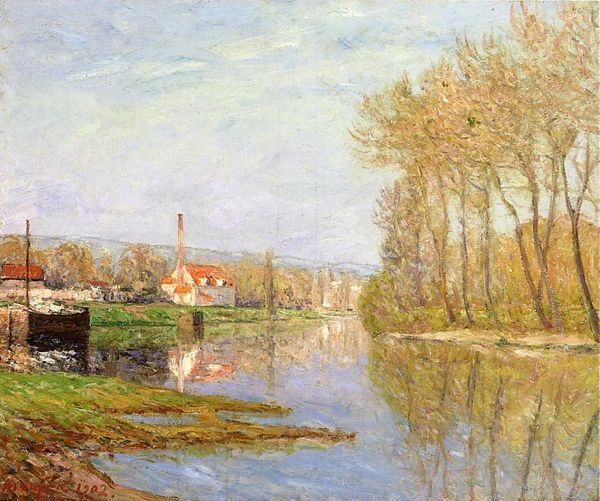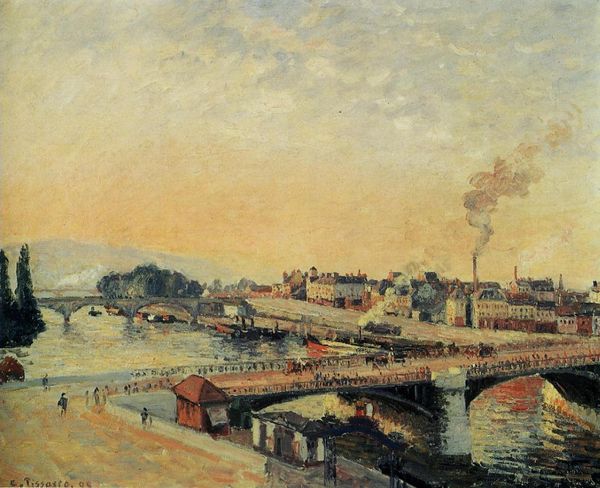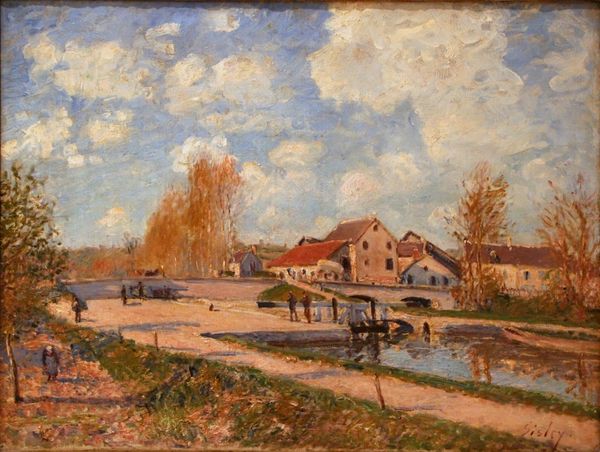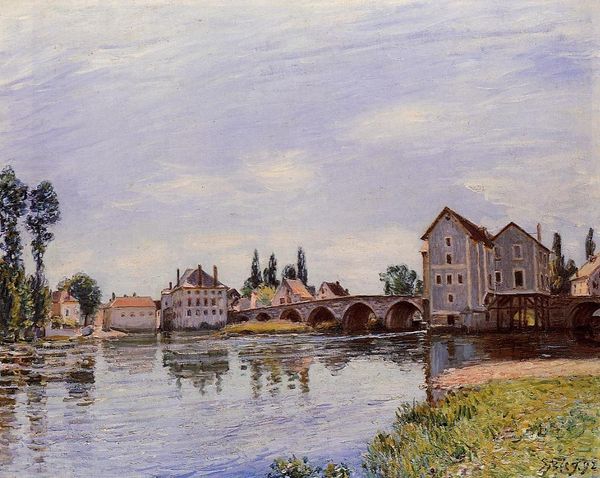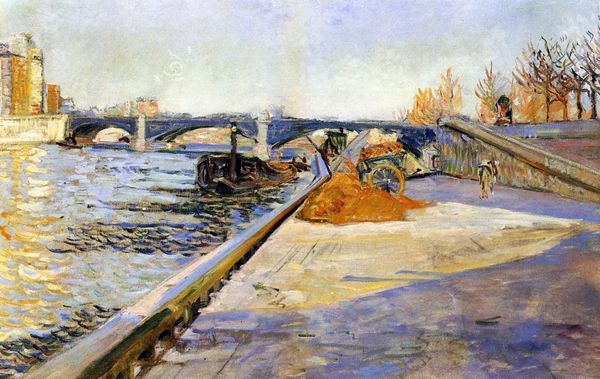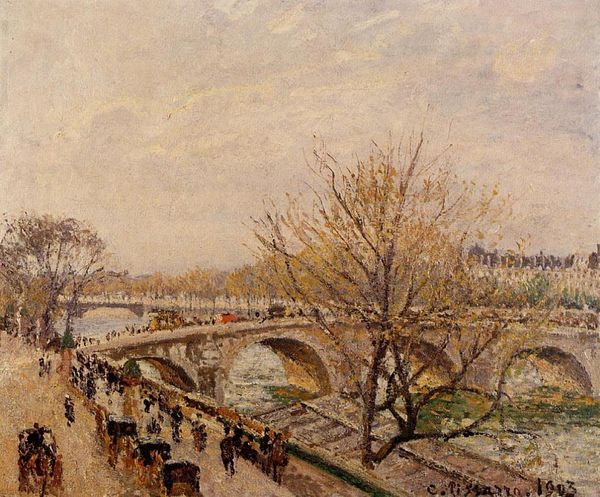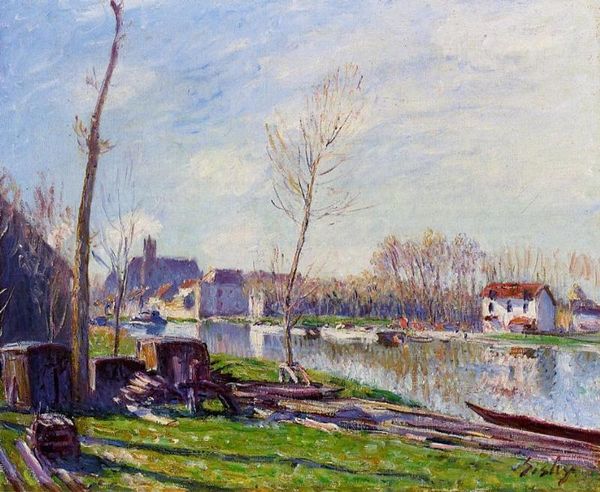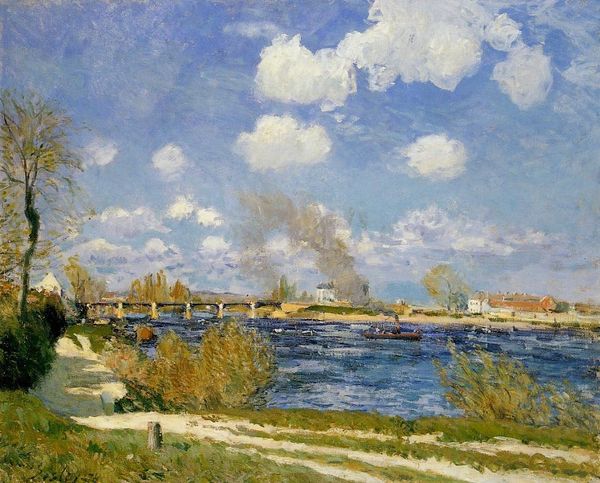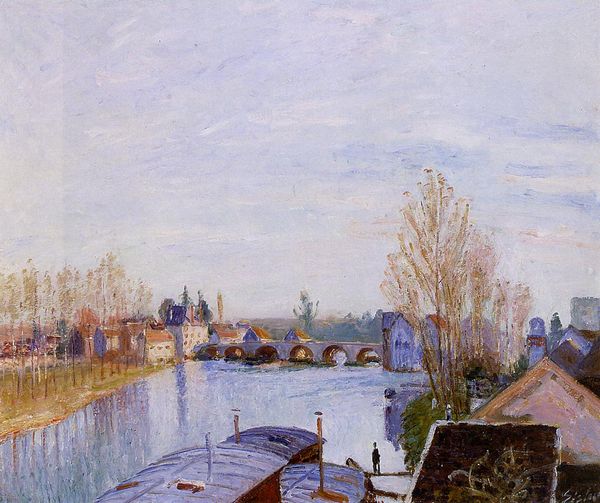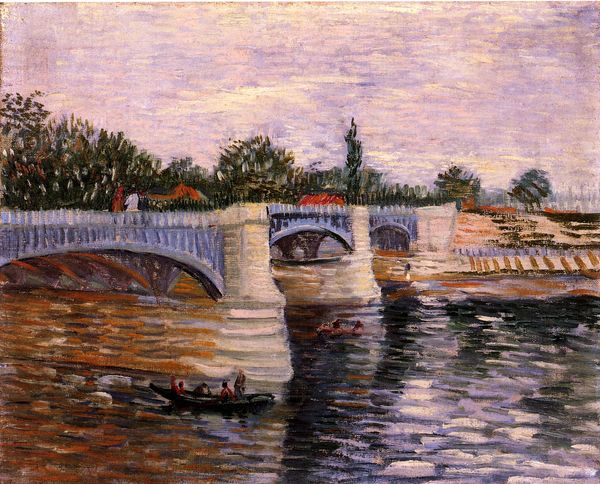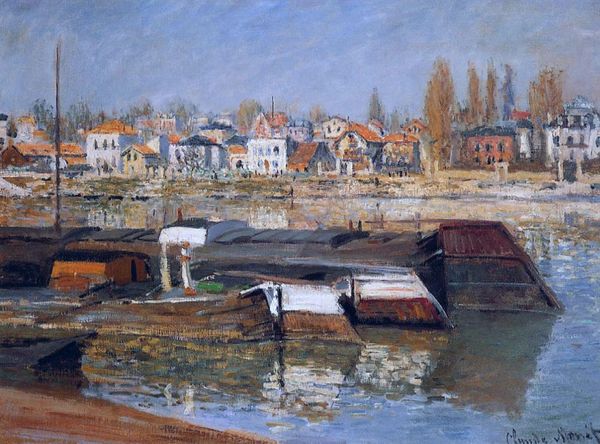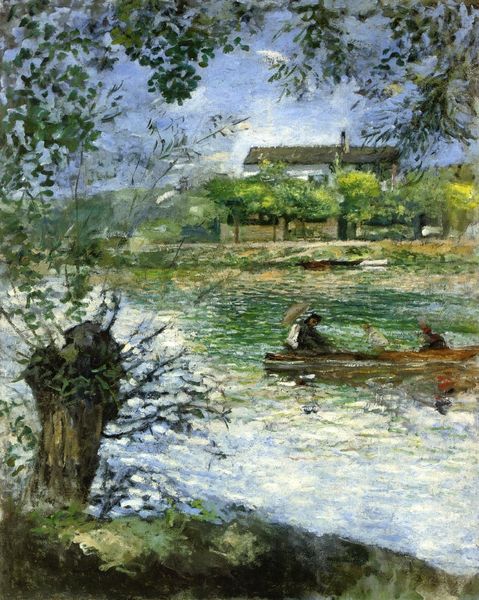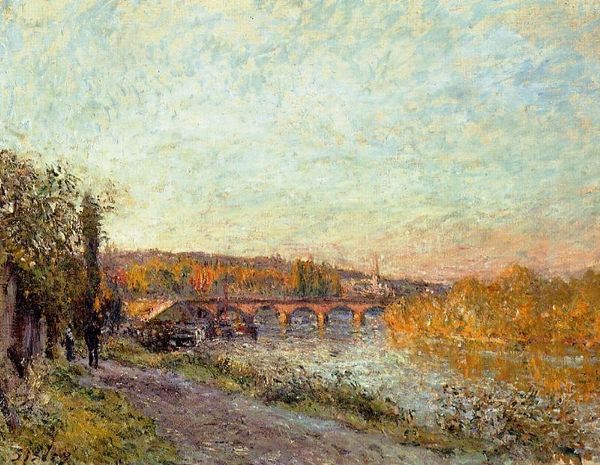
Dimensions: 21.25 x 25.25 cm
Copyright: Public domain
Editor: Here we have Gustave Loiseau’s oil painting, "The Pont Marie de Paris," created in 1912. I’m struck by the contrast between the stillness of the water and the bustling activity suggested by the figures and the construction on the riverbank. What can you tell me about how the artist creates this effect? Curator: Indeed, Loiseau masterfully uses compositional elements to create this visual tension. Note the horizontal emphasis achieved by the bridge and riverbank, balanced by the verticality of the buildings. How does this structural balance influence your perception of the artwork? Editor: It definitely creates a sense of stability, despite the implied movement. The bridge feels very grounded. Curator: Precisely. Consider then how the limited color palette – primarily earth tones with subtle hints of blue and red – contribute to the overall mood. It feels subdued, yet there are also strong directional strokes to indicate water or light. Editor: I see that. I hadn't thought of the brushstrokes adding so much directionality and energy in an otherwise muted scene. Curator: Now, examine how Loiseau uses impasto techniques, layering the paint to add texture and depth. Observe, especially, how the brushstrokes around the piles of soil, the bridge, and even the figures add layers. What effects do you think this achieves? Editor: The texture does bring the scene to life! I see what looks like little clods of upturned dirt on the riverbank near the figures. Curator: It brings our attention to the materiality of the work itself, which leads to greater reflection upon the artistry that makes it appear more lifelike. Editor: Thank you, looking at the relationship of colour and layering really transformed how I read this piece! Curator: And considering all its intrinsic properties allows one to reflect on their experience when face to face with the art itself.
Comments
No comments
Be the first to comment and join the conversation on the ultimate creative platform.
